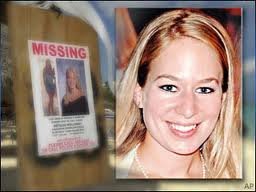A windscreen wiper (Commonwealth English) or windshield wiper (American English) is a device used to remove rain, snow, ice, washer fluid, water, or debris from a vehicle's front window. Almost all motor vehicles, including cars, trucks, buses, train locomotives, and watercraft with a cabin—and some aircraft—are equipped with one or more such wipers, which are usually a legal requirement.
A wiper generally consists of a metal arm; one end pivots, and the other end has a long rubber blade attached to it. The arm is powered by a motor, often an electric motor, although pneumatic power is also used for some vehicles. The blade is swung back and forth over the glass, pushing water, other precipitation, or any other impediments to visibility from its surface. The speed is usually adjustable on vehicles made after 1969, with several continuous rates and often one or more intermittent settings. Most personal automobiles use two synchronized radial-type arms, while many commercial vehicles use one or more pantograph arms.
On some vehicles, a windscreen washer system is also used to improve and expand the function of the wiper(s) to dry or icy conditions. This system sprays water, or an antifreeze window washer fluid, at the windscreen using several well-positioned nozzles. This system helps remove dirt or dust from the windscreen when used in concert with the wiper blades. When antifreeze washer fluid is used, it can help the wipers remove snow or ice. For these types of winter conditions, some vehicles have additional heaters aimed at the windows, embedded heating wire(s) in the glass, or embedded heating wire(s) in the wiper blade; these defroster systems can melt ice or help to keep snow and ice from building up on the windscreen. Less frequently, miniature wipers are installed on headlights to ensure they function optimally.
History
Early versions
One of the earliest recorded patents for the windscreen wiper is by George J. Capewell of Hartford Connecticut, which was filed on August 6, 1896. His invention was for "windows of slow-moving craft; but it is more particularly adapted and intended for windows of rapidly-moving vehicles, such as high-speed locomotives and cars, with which it is necessary that the observer or driver should have a clear view of the path or track." Similar to current automotive wiper designs, his invention involves "usually two of these wipers, and they can be secured to the frame below the front board of the vehicle or behind the housing surrounding the window in position to be out of sight and in such manner that one will scrape off the heaviest part of the substance collected upon the glass." His patent illustration shows a circular window, although the patent notes "it is not essential that the glass be circular in form."
Other early designs for the windscreen wiper are credited to Polish concert pianist Józef Hofmann, and to Mills Munitions, Birmingham, who also claimed to have been the first to patent windscreen wipers in England. At least three inventors patented windscreen cleaning devices at around the same time in 1903; Mary Anderson, Robert Douglass, and John Apjohn. In April 1911, a patent for windscreen wipers was registered by Sloan & Lloyd Barnes, patent agents of Liverpool, England, for Gladstone Adams of Whitley
American inventor Mary Anderson is popularly credited with devising the first operational windscreen wiper in 1903. In Anderson's patent, she called her invention a "window cleaning device" for electric cars and other vehicles. Operated via a lever from inside a vehicle, her version of windscreen wipers closely resembles the windscreen wiper found on many early car models. Anderson had a model of her design manufactured, then filed a patent (US 743,801) on June 18, 1903 that was issued to her by the US Patent Office on November 10, 1903.
Irish born inventor James Henry Apjohn (1845–1914) patented an "Apparatus for Cleaning Carriage, Motor Car and other Windows" which was stated to use either brushes or wipers and could be either motor driven or hand driven. The brushes or wipers were intended to clean either both up and down or in just one direction on a vertical window. Apjohn's invention had a priority date in the UK of 9 October 1903.
John R. Oishei (1886-1968) formed the Tri-Continental Corporation in 1917. This company introduced the first windscreen wiper, Rain Rubber, for the slotted, two-piece windscreens found on many of the automobiles of the time. Today Trico Products is one of the world's largest manufacturers of windscreen wipers. Bosch has the world's biggest windscreen wiper factory in Tienen, Belgium, which produces 350,000 wiper blades every day. The first automatic electric wiper arms were patented in 1917 by Charlotte Bridgwood.
Inventor William M. Folberth and his brother, Fred, applied for a patent for an automatic windscreen wiper apparatus in 1919, which was granted in 1921. It was the first automatic mechanism to be developed by an American, but the original invention is attributed by others to Hawaiian, Ormand Wall. Trico later settled a patent dispute with Folberth and purchased Folberth's Cleveland company, the Folberth Auto Specialty Co. The new vacuum-powered system quickly became standard equipment on automobiles, and the vacuum principle was in use until about 1960. In the late 1950s, a feature common on modern vehicles first appeared, operating the wipers automatically for two or three passes when the windscreen washer button was pressed, making it unnecessary to manually turn the wipers on as well. Today, an electronic timer is used, but originally a small vacuum cylinder mechanically linked to a switch provided the delay as the vacuum leaked off.
If you want to read a lot more, go here: https://en.wikipedia.org/wiki/Windscreen_wiper
- 4 pounds Idaho Russet potatoes, peeled and chunked
- 1 large onion, quartered
- 1/2 cup all-purpose flour
- 1/4 cup plain bread crumbs
- 1 teaspoon baking powder
- 2 teaspoons salt
- 1 teaspoon black pepper
- 2 eggs, beaten
- 1/2 cup vegetable oil
- In a food processor, process the potatoes and onions in batches, until finely chopped. Empty each batch into a strainer and, using a spoon, press down on the mixture to remove as much water as possible.
- In a large bowl, combine potato-onion mixture, the flour, bread crumbs, baking powder, salt, pepper, and eggs; mix well.
- Heat the oil in a large skillet over medium heat.
- Using a serving spoon, spoon about 1/4 cup batter for each pancake into the hot oil, flattening into a pancake shape. Cook 2 to 3 minutes per side, or until golden on both sides.
- Drain on a paper towel-lined platter and serve warm.

1986 – Natalee Holloway, American missing person (missing since 2005) What a long story and still never found!
Each year on October 21st, National Pumpkin Cheesecake Day ushers in the flavors of fall. Cheesecake is one of America’s favorite desserts and by adding pumpkin, we celebrate the essential flavoring of the season.
This sweet dessert mixes fresh soft cheese, cream cheese or cottage cheese, eggs, and sugar to create a base. The crust is made from crushed graham crackers, crushed cookies, pastry, or sponge cake. Pumpkin may be added to cheesecake recipes in various ways. For example, it may be swirled throughout, mixed thoroughly with all ingredients, or layered. Bakers prepare cheesecakes both baked or unbaked. Some bakers flavor cheesecakes and top them with fruit, fruit sauce, chocolate, or whipped cream.
An ancient form of cheesecake may have been a popular dish in ancient Greece. The earliest attested mention of cheesecake is by the Greek physician, Aegimus. He wrote a book on the art of making cheesecakes.
James Kraft developed a form of pasteurized cream cheese in 1912. In 1928, Kraft acquired the Philadelphia trademark and marketed pasteurized Philadelphia Cream Cheese.
North America has several different styles of cheesecakes:
- New York-style cheesecake
- Pennsylvania Dutch-style cheesecake
- Philadelphia-style
- Farmer cheese cheesecake
- Country-style cheesecake
- Lactose-free cheesecake
- Cheesecake Kludys
- Chicago Style Cheesecake
- Savory cheesecake
Try one of the following recipes to celebrate:
Double Layer Pumpkin Cheesecake
Pumpkin Cheesecake Bars
Chocolate Pumpkin Cheesecake Bars
Caramel Pecan Pumpkin Cheesecake Bites
Pumpkin Cheesecake


.jpg)







No comments:
Post a Comment